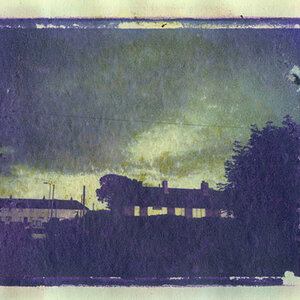Petraio Prime
TPF Noob!
- Joined
- May 28, 2010
- Messages
- 1,217
- Reaction score
- 0
- Location
- Ohio
- Can others edit my Photos
- Photos NOT OK to edit
This is not the sort of material I would send to a lab.
I don't see why not. Any professional lab should be capable of developing it. In this instance in particular, the lab had the good sense to ask if the OP wanted it developed as continuous tone or high contrast, which indicates that they know how to develop it either way...
Yes, but they may not have the kind of soft-working developers needed and may try to wing it using conventional developers.
Last edited:




![[No title]](/data/xfmg/thumbnail/37/37606-3c9ffb5906173fa2aa489341967e1468.jpg?1619738148)








